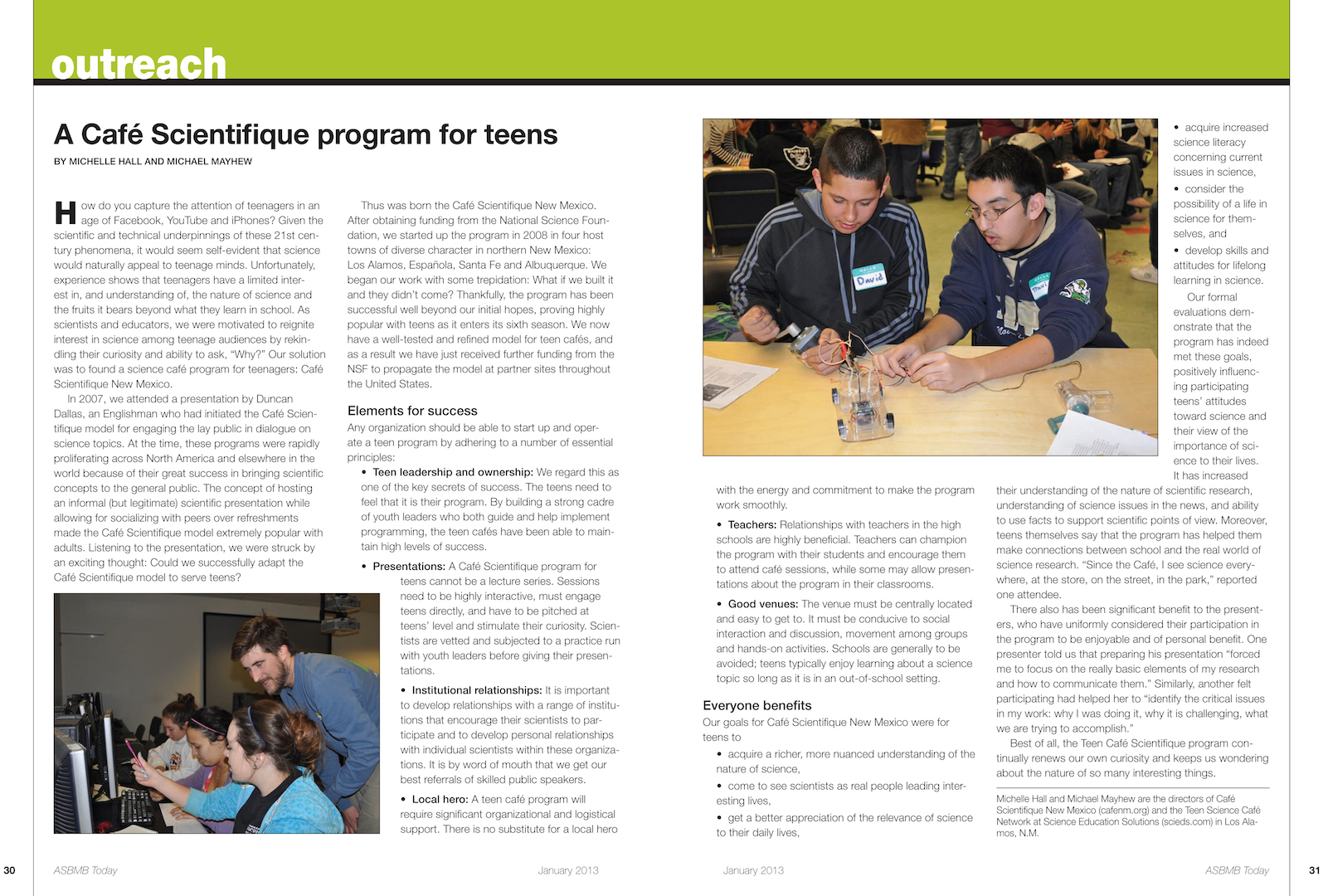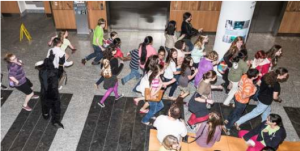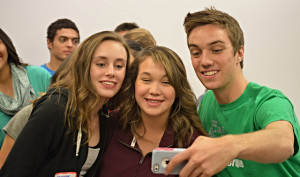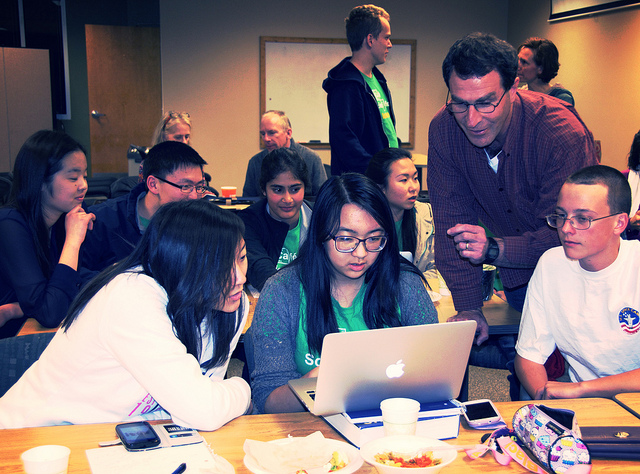
Science Cafés: getting back to the roots
 Science Cafés: getting back to the roots
Science Cafés: getting back to the roots
Ann Grand and Michelle Hall
In 2003, when one of us (AG) first became involved with the Café Scientifique movement in the UK by starting a program in Bristol, Cafés were described as “a place where anyone can come to have a conversation about the latest ideas in science and technology” (CaféScientifique.org, 2015). Café Scientifique was an effort to move science away from the academic environment and the academic lecture into popular locations supporting lively conversations about science with broad audiences.
At that time, just five years after the first Cafés had been held in the UK and France (Dallas, 2006), Cafe Scientifiques were very much a grass-roots, under the radar public engagement activity. Cafés were organised by volunteers, held in pubs, bars and cafes, and welcomed those few brave scientists who dared to step out of the lecture theatre. Media coverage focussed on this strange conjunction of scientists and sofas, with headlines such as “When it comes to science, I’d rather have a latte than a lecture” (Anjana Ahuja, The Times Science Briefing, Feb 2002); “Ace caff, nice prof attached” (Tim Radford, the Guardian, Feb 2002); “Packet of crisps with your cosmology?” (Simon Singh, New Scientist, Apr 2002).
Since 1998, science cafés have spread across the world, with some 75 or so in the UK, hundreds in the United States and Canada, and a presence in more than 45 countries. Programs are growing in eastern Africa, South Africa, and Singapore. Science cafes designed specifically for teenagers (the network led by MH) are relatively newer, and in the past 3 years have grown to 41 café sites in 20 US states (Teen Science Cafe Network, 2015).
In 2005, AG took over as the volunteer webhost for www.cafescientifique.org, still thinking of cafes as an “organisation without any organisation— just people who care deeply about science, bound together by core beliefs and principles, rather than rules and regulations” (Grand, 2014). When she became part of the formal academic science communication world, by starting a PhD studentship in 2009, she was surprised to realise that—far from being an underground movement—cafés were an accepted part of the science communication scene, alongside science centres, and a vibrant science festival scene (DIUS, 2008, p. 10). More recently, the term “science cafés” has become an unremarkable keyword for submissions to the forthcoming PCST conference (PCST, 2015).
Science cafes have clearly become widespread and popular, yet what concerns us, is the creeping trend of the model toward academic lectures. The popularity of science cafes stems from the informal setting of a social venue combined with a lively conversation that engages both scientist and participants. Research councils, funding bodies, learned societies, universities, museums and the science
communication community have seen the cafe model and realised it works as a simple, low-cost and flexible public engagement activity.
The very simplicity and popularity of the Café model has presented challenges to the basic principles of the science café. As larger crowds gather and larger venues are needed to accommodate the participants, presentation software and sound systems have crept in and open discussion falters because the speaker and participants have to use microphones to be heard. With the loss of free-flowing conversation coming from the participants, many science cafés have transformed to lectures. Lectures are fine, when well done, and when that is the intent of an event. But science cafés were never intended to be lectures.
At the 2015 International Public Science Events Conference in Cambridge, Massachusetts (Science Festival Alliance, 2015), in a session led by the authors, leaders of science cafés from around the world came together to talk about these challenges and how to get back to the roots of science cafés.
So, what are those roots? While science cafés can spring up anywhere and take on local unique features, there are core principles and design elements that underlie the original concept and that make these events unique. How do we support conversation and fend off the trend toward lecture? Here are some key elements that we believe support great science café conversations.
Conversation, not lecture: First and foremost is the core principle that rich conversation must occur at science cafés. Engaging all participants brings out many different perspectives and new dimensions to the topic; indeed this can provide scientists new ways of thinking about their own research! While the invited speaker will present new ideas on a current science topic, the magic of a science café happens when it is assumed that everyone present has an important perspective to add to the conversation and the opportunity to do so. Science cafés are a free, informal, and low-risk way for scientists to share their knowledge and passion with the public, while listening to the public’s views of the topic. These experiences have influenced public understanding of important societal implications of science research, while altering the way scientists’ think about and talk about their science.
Teen Science Cafés have been shown to have significantly changed teens’ view of the importance of science in their lives, positively influence teens’ understanding of science in the news. They have increased teens’ ability and confidence to use facts to support scientific points of view, and to consider multiple sides of an issue before making a decision. The Café events also positively influenced teens’ interest in science and science careers, and revealed the nature of scientific research (Mayhew & Hall, 2012).
Venue: it might seem unnecessary to say that a science café should take place in a café (or bar, pub, shopping centre, gallery…) and not in an academic setting. But in fact, the nature of the venue shapes the nature of the interactions that take place. In a lecture hall you expect to be lectured at; in a Café you expect to have a conversation (Dallas, 2006). Science Cafés, whether for teens or adults, should be
egalitarian and have a degree of informality that invites participation from everyone in the room.
Layout: Cafés, bars and pubs are places where people go to eat and drink. Therefore, ideally, participants in science cafes will be seated around tables, not neatly in rows, all facing the same direction. Tables encourage natural conversation and interaction: even if two people only turn to each other during the break and ask “did you have any idea what she was talking about?”, at least they will have engaged about the topic under discussion. Bars rarely have a lectern or dais, so there is no ‘front’, no privileged position for the speaker and moreover, the speaker has license to move around, meaning that at least a quarter of the participants will have their back to the speaker at any point.
Managing the power balance between participants and speaker: The traditional format of a science café in the UK, USA, and Canada, is for the scientist to give a short introduction to the topic, followed by a short break to allow the participants to take a trip back to the bar to refill their drink, digest the new ideas and formulate questions. Then a wide-ranging discussion ensues among the participants and the speaker, and—if it’s a really good evening—among the participants themselves. In a typical two-hour Café, this usually works out to an introduction of 15 to 20 minutes, a break of 20 minutes and up to 80 minutes for discussion.
It is important to ensure that the majority of the time is given to this conversation; to the comments, thoughts, and opinions of the participants and not the speaker. The speaker’s role is to talk about an intriguing topic, usually their current research, and provide just enough material for an interesting conversation. Opening the event by describing it as a conversation and inviting the participants to interrupt with questions is key to setting the stage. Evidence in Teen Cafés shows that if the speaker interjects thoughtful questions for the participants in the first few minutes of the talk, the participants are more likely to keep that conversation going (Mayhew & Hall, 2012).
Nor is it necessary to go right back to the basics of a topic, as sometimes speakers are tempted to do. People come to a science café because they are interested in the particular topic, or simply because they are interested in science. Whichever group they fall into, they are interested. Most participants in science cafés are reasonably well-educated and articulate (the challenges of attracting people outside these categories is the stuff of another commentary). They are generally unafraid to ask if the speaker says something puzzling or uses an unfamiliar piece of jargon. If a speaker starts high, they can come down a notch or two if the participants start to look puzzled but he or she can never recover from having insulted the intelligence of the audience by assuming they need to go back to first principles.
For Teen Science Cafés (www.teensciencecafe.org), an engaging hands-on component lead by the scientist is substituted for the trip to the bar to refill drinks. The act of getting out of one’s seat, mingling with other teens, and having the opportunity to ask specific questions of the scientist, while engaging in a meaningful
exploration of the topic, is an incredibly powerful hook for teens. It also encourages more questions during the conversation part of the Café.
Leadership: Organisers of adult Cafés are typically volunteers who seek recommendations for speakers, secure the venue, advertise the event, and hope for the best. Their dedication and insight on what makes a great presenter or topic is key to success. For Teen Cafés, there is an added element of teen leadership teams. These are composed of high school age teens that love to learn about science and the world, but are not necessarily oriented towards science careers. The teen voice and volunteer time is critical for ensuring that the program looks and feels like it belongs to them. They help pick topics, plan for refreshments if the event is not held in an eatery, learn to introduce speakers, moderate conversations, and do the key marketing for their audience.
Speakers: A great Café starts with a great speaker and conversationalist with a good understanding of the goals of Café Scientifique. Speakers do not have to be well-known or academic leaders: they can be PhD students (the informal and welcoming ambience of a café can be an ideal first public engagement outing for an inexperienced speaker), early-career researchers or venerable professors of international reputation. Science cafés draw the boundary of science very wide; speakers can be scientists of all stripes, engineers, journalists, social scientists, philosophers and even researchers in public engagement. Teen participants especially want passionate, enthusiastic, relaxed and humorous speakers who naturally show their love of their work and can communicate its relevance.
Technology: Ideally, there should be no more technology in a Café than you would normally have around your dinner table. You do not normally produce PowerPoint slides when you are having a conversation, so why should you when you are at a Café? The same applies to microphones—a microphone literally gives the speaker the talking stick, which means they control the conversation. Without a microphone, participants can interrupt at will and talk naturally.
But, we should acknowledge this issue is a matter of long-standing discussion in the Café Scientifique community. Technology can certainly be used judiciously, effectively and creatively. Images can enhance engagement and understanding, especially for teens, who typically have less world-knowledge than adults. And the use of a sound system during the introduction to the topic can help a lot in noisier venues. However, technology can also be used unthinkingly and without consideration for the special circumstances of a science café. How often have we all been in an event where the speaker has spent most of their time talking to the screen, not the audience? Café speakers should be brave enough to speak “naked” (Grand, 2014) and have the courage to leave the slides behind, forsaking them for direct, unvarnished conversation and the sharing of a common passion: science.
Café Scientifique (n/d) How it works [online] Available from http://www.cafescientifique.org/index.php?option=com_content&view=article&id= 72&Itemid=484 (Accessed September 2015)
Dallas, D. (2006) Café scientifique – déjà vu Cell 126(2) 227–222
DIUS, (2008). A vision for science and society, London: Department for Innovation,
Universities and Skills.
Grand, A. (2014) Café Scientifique Science Progress, 97, 275–278
Mayhew, M. and Hall, M. (2012) Science communication in a café scientifique for high school teens Science Communication 34(4) 546–554
PCST (2015) How to submit proposals [online] Available from https://www.pcst.co/proposals/howto (Accessed September 2015)
Science Festival Alliance (2015) 2015 IPSEC Program Available from http://sciencefestivals.org/resource/2015-ipsec-program/ (Accessed September 2015)
Teen Science Café Network (2015) Home Available from www.teensciencecafe.org (Accessed September 2015)
Michelle K. Hall is co-Director of the Teen Science Café Network with Michael Mayhew. They have been leading teen science cafés since 2008 and developed a model that addresses the unique needs and interests of teens who are exploring science in their world and future careers. Teen science cafés emphasize the wandering paths that scientists typically take throughout their career, allowing teens to realize they too have what it takes. These programs also emphasize active learning, exploring puzzles and problems relevant to their lives.
The Teen Science Café Network is an open community of practice creating events where teens can learn from leading experts about science and technology changing their world. Teen Cafés are informal, interactive programs that promote exploration, creativity, and life long learning. We support and freely share our expertise with others who would like to start a Teen Café. Find us at http://teensciencecafe.org.
In 2016, Ann Grand will take up a Lectureship in Science Communication at the University of Western Australia. Until 2015, she was a part-time Research Associate at The Open University, a member of the RCUK-funded Catalyst for public engagement with research, looking into researchers’ practice in digital engagement and how public engagement with research can be supported and facilitated through
digital technologies. She was also a part-time Research Fellow in the Science Communication Unit at the University of the West of England, Bristol (UWE), working with academic and research staff in the life sciences, specifically focusing on embedding public engagement within research projects. Ann has been a prominent member of the international Café Scientifique movement since she started the Bristol Science Café in 2003. Since 2005, she has been voluntary webmistress for the network, advising, supporting and mentoring new café organisers around the world and hosting and maintaining the website.

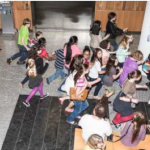 Previous Post
Previous Post